Every wildlife photographer dreams of showing up at a location where all they have to do is sit down, let their subjects come to them, and then just keep pointing the camera at action that seems to go on forever. Such is a day at a productive water hole when the subject is wild horses photography.
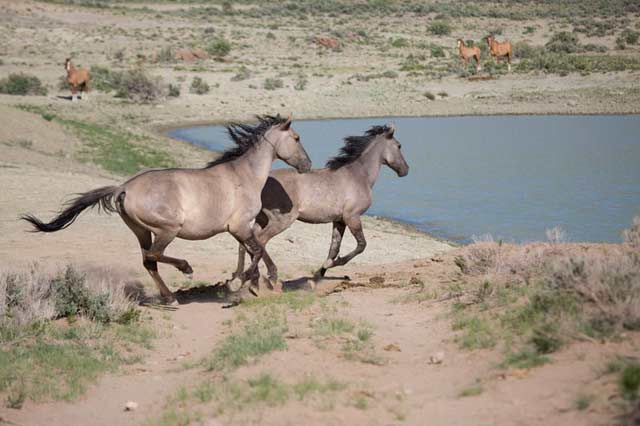
This is a true vision of the Old West – a photographer’s dream turned into reality! In the western U.S. to date, there are approximately 100 BLM herd management areas with more than 2,000 free roaming, wild horses.
Travel to one of these locations in the spring and the activity picks up even more as young foals interact with their mothers and stallions vie for the attention of the mares for their next mating session. All you need to do when you arrive is to find the right water hole, have your camera equipment ready, then sit back and wait for the action.
The location I visit in northwest Colorado – Sand Wash Basin – has a nice setting where the horses enter from one of several directions. Upon picking a spot, there’s a sequence of activities that will occur when the horses arrive.
Keep watch on the paths that the horses have created along the ridges. Like most animals, once they have worn down the brush and made a path, they will keep using it over and over again. You’ll get some nice entrance photos to the watering hole as they come over the ridges towards you.
Be ready, because you can include both small and large groups and they could be taking their time or heading in on the run.
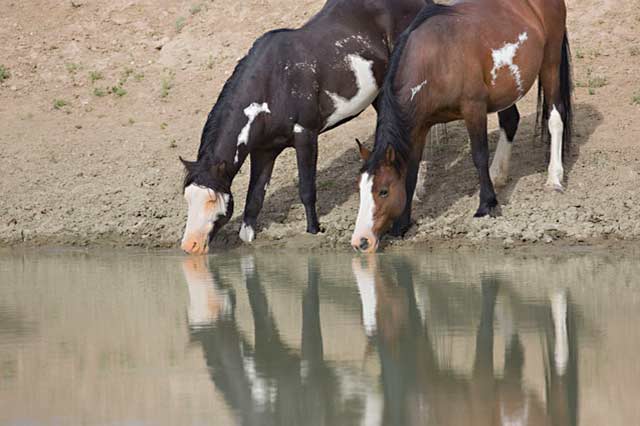
Once they’ve arrived at the watering hole, they will typically drink at the waters’ edge. Don’t forget to pay attention to their reflections in the water, as some have beautiful markings. When the conditions are just right those reflections can make for some really nice images.
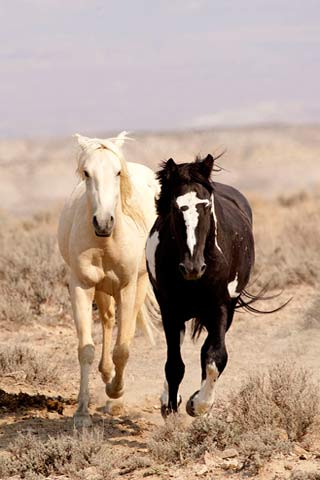
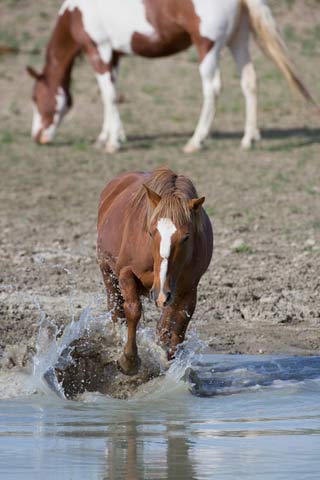
Another behavior frequently seen is their kicking the water. This behavior is some of the most enjoyable. Numerous will do this, and if in the right position, those photos can be some of the best in your wild horses photography collection. A good thing to concentrate on is getting a hoof lifted up out of the water as they’re standing there stomping the water to stir it up.
Once they’ve stirred up the water, they will often either stand belly deep to get a drink or lay down for a mud bath.
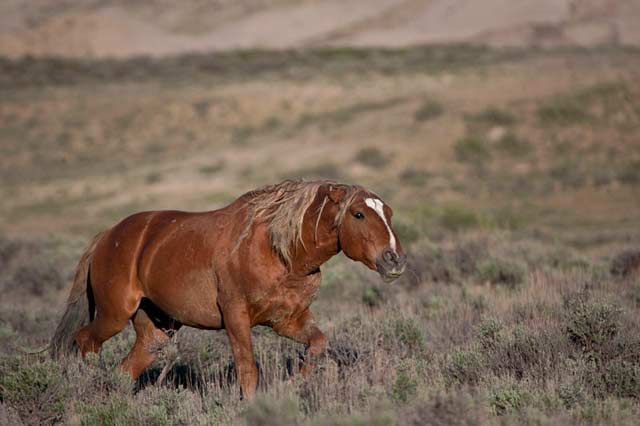
Headed for a Stallion Encounter
Camera Settings For Wild Horses Photography
In order to stop their actions, a fast shutter speed will be required. A “rule-of-thumb” when photographing wildlife action is to not set the shutter speed at less than 1/1000th of a second – 1/2000th of a second is preferred, especially when hand-holding.
While you may not have to think much about bumping up the ISO on sunny days, in order to get higher shutter speeds and capture the details of the animal, it is fine to do so. My suggested ISO range for wildlife on a sunny day is around 640, as the quality is still very acceptable and the shutter speed is more than sufficient.
Now, with that said, using even faster shutter speeds are not a bad idea, especially when there could be water splashing all around or the stallions are rearing up and fighting. For some of the images shown here, a shutter speed of up to 1/5000th was used.
When you do get shutter speeds around this range, it’s fine to stop down the aperture in order to get more depth of field. These are good-sized animals and when several get close together more depth is needed to get everything in focus.
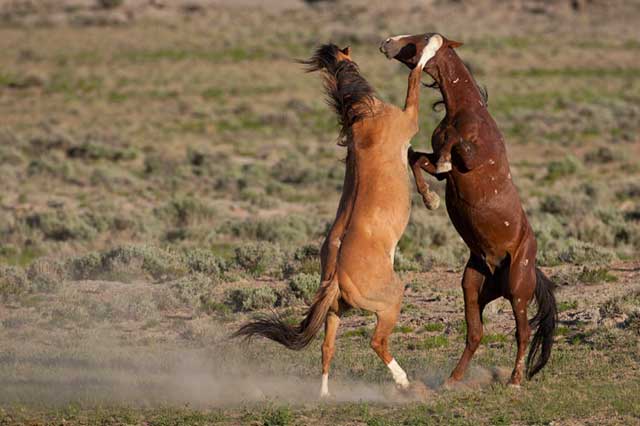
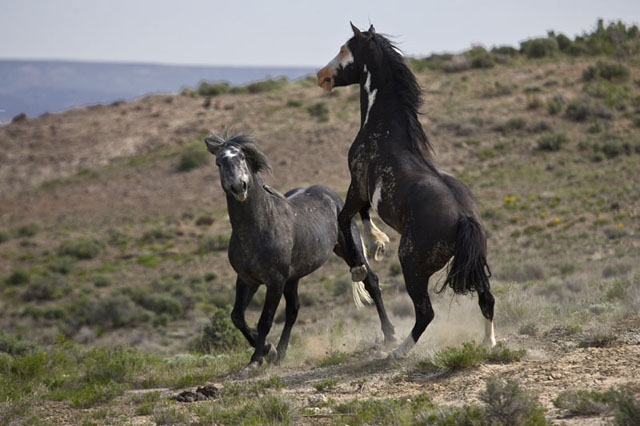
Most people visiting these areas want is to be able to capture the action of the stallions getting into a scuffle.
Most of these encounters occur either because they are showing the other horses at the water hole that they’re “king of the hill”, while some are fighting to show dominance in order to bring in another mare to their band. Often there’s more posturing than action, but you have to be quick on the shutter button when they do rear up and kick.
The settings here include getting the camera’s motor drive on its fastest rate and the auto-focus on Servo / Continuous to keep up with the action. For fast-moving wildlife it’s best to shoot in short bursts of about four or five shots, let up off the shutter button and press it again. This helps make sure the focus gets reset where it’s needed.
NOTE ON FOCUS: If your camera has the function to set an expanded focus point range, do so. If the subject moves off the individual focus point when shooting in Servo, it will still pick up the focus point in the expanded range.
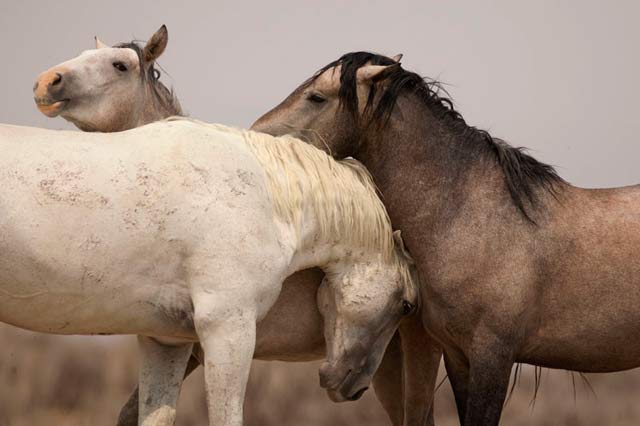
When there are three or four different groups at the water hole, look in all directions for potential interaction among the horses, such as the nuzzling that occurs and especially of a foal’s interaction with its mother.
These will always be special photographs. And don’t forget to make some beautiful portraits – action photos make for great behavioral photos, but the details of posed images can be just as stunning.
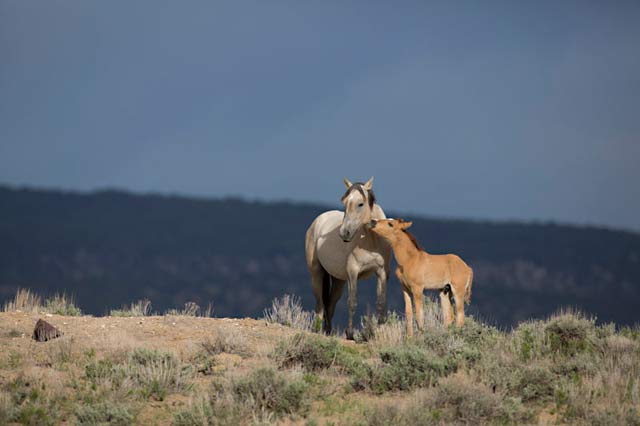
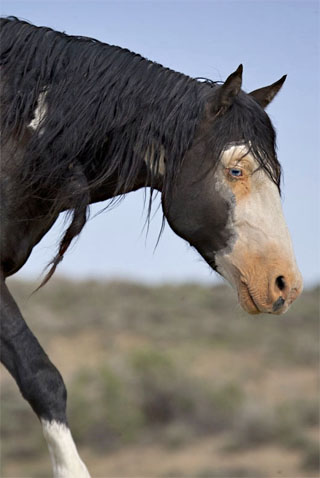
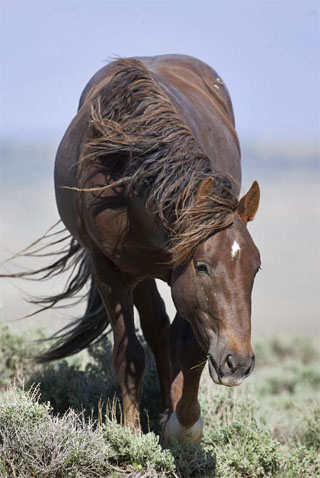
And to finish the day off, stay around for the magic of sunset. To help enhance and saturate those sunset colors, use Cloudy white balance to warm up the colors and underexpose -1/3 EV. This will also help silhouette the subject even more.
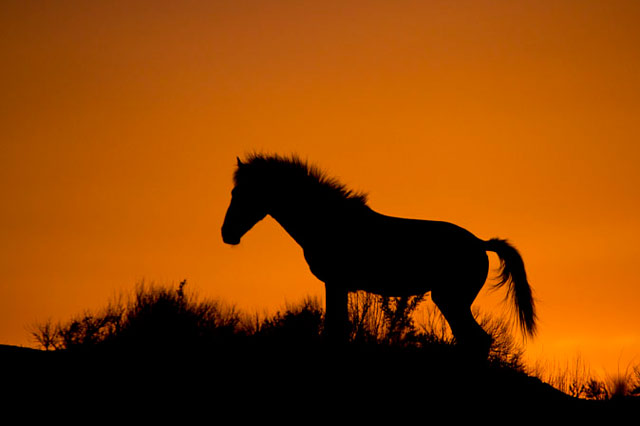
Just about all of these wild horses photography tips can be used with most wildlife photography. Keeping them at the ready will help you get sharper images of that quick behavior happening in front of the camera.
by Andy Long
First Light Photo Workshops
All text & photos: © 2013 Andy Long. All rights reserved.

Leave a Reply